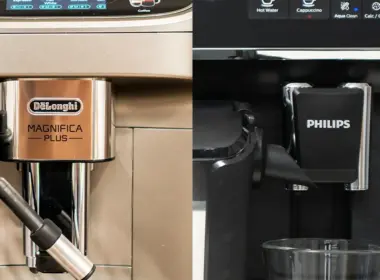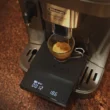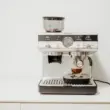The Breville/Sage Barista Express and the De’Longhi Specialista Arte are two of the most recommended entry-level espresso machines for aspiring home baristas. But what does “entry-level” actually mean? Essentially, these machines are ideal for anyone who wants to start taking espresso seriously and learn to brew café-quality coffee at home.
I’ve personally tested both machines — you can read my full review of the Sage Barista Express and the De’Longhi Specialista Arte. In this article, though, I’ll go a step further by offering a detailed, side-by-side comparison of the two to help you decide which one suits you best.
Both models share two essential features: an integrated grinder capable of grinding fine enough for the non-pressurized filters included with each machine, and a steam wand that’s powerful enough to texture milk to true barista standards. That said, they differ in several key areas, including price, and in this comparison, I’ll break down exactly what sets them apart.
Note: In Europe, the brand that sells this machine is Sage, while in the US, Canada, Australia, and other markets it’s sold under the Breville name. You can learn more about this in another post on my blog.
Differences in the grinder
Every good barista knows that the most important piece in their arsenal is the grinder, so I’ll start by talking about it.
In both machines, the grinder is conical and made of stainless steel. However, the Barista Express has more grinding settings, specifically 16, compared to the De’Longhi’s 8.
The Barista Express has even more settings, as you can remove the bean hopper, access the grinder, and remove the top burr, where you have another 12 micro-adjustments that allow you to bring the burrs closer or further apart internally to grind a bit finer, enabling you to calibrate “finer” for greater precision.
For example, if you have the external grinder setting at one and notice that you need to grind even finer, you can adjust the grind on the internal burr to achieve a finer grind. This possibility is not available on the De’Longhi, so if you reach setting one and need to grind even finer, you won’t be able to do it.
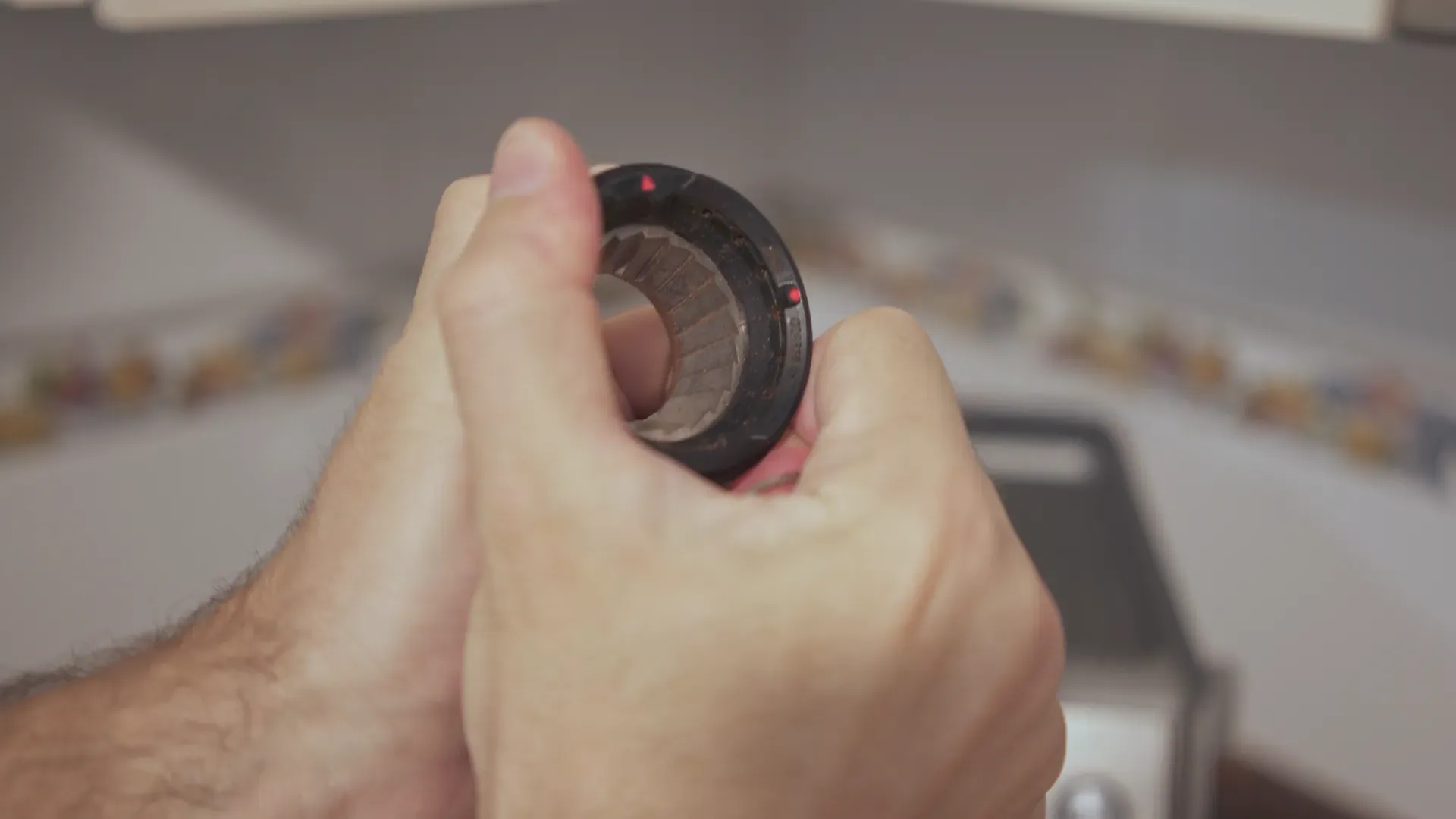
However, I don’t agree with what is mentioned in other reviews about the grinder of the De’Longhi Specialista. While it’s true that eight grinding settings are few, in my tests, I found that settings 3 to 1 grind fine enough for espresso. Indeed, you don’t have the wide range or such precise adjustment, but it’s a perfectly capable grinder for grinding espresso using medium- to dark-roasted coffee beans.
Differences brewing espresso
Pre-infusion is one of the aspects where the difference between these two machines is most noticeable. The Sage Barista Express allows the user to extend this step simply by holding down the button, so the coffee is evenly moistened before entering the full pressure phase. This gives more room to experiment and adjust according to the type of coffee or grind. The De’Longhi Specialista Arte, on the other hand, offers fixed pre-infusion times (0, 1, or 2 seconds), making it simpler and more consistent, but less flexible when it comes to fine-tuning the extraction to your liking.
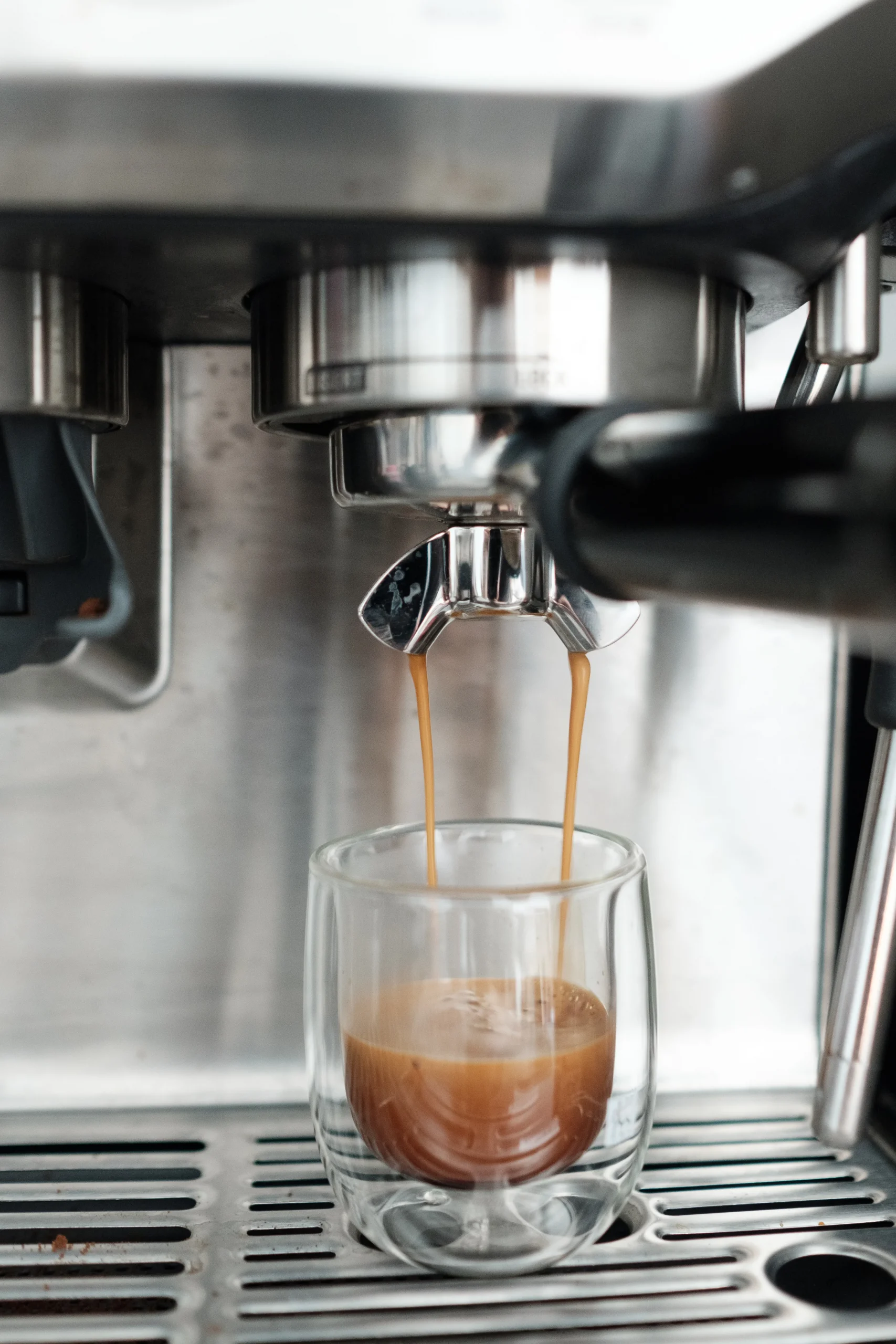
When we move to extraction, we see that Sage/Breville also offers a greater degree of control. After pre-infusion, the pressure gradually increases until it reaches its maximum, and the user can influence this transition. In the De’Longhi, this process is more automated: once pre-infusion ends, the machine applies the extraction pressure in a predetermined manner. The result is that the Specialista is more practical and easier to use, while the Barista Express rewards those who enjoy “playing” with the details.
One point in favor of the Sage/Breville is that, since 2022, it has sold the Barista Express with the overpressure valve (OPV) adjusted to limit extraction to 9 bars, which is the recommended pressure for espresso. This ensures more consistent results and gives fewer channeling problems. In the De’Longhi, there is no confirmation that it has a similar adjustment, so it can be assumed that it works with higher pressure, similar to domestic machines in the same range, which usually extract at 13 or 14 bars.
Finally, there’s the portafilter diameter, a detail that often goes unnoticed when discussing these topics. The Specialista Arte uses a 51 mm one, while the Barista Express uses a 54 mm portafilter. The smaller De’Longhi filter is more forgiving: it concentrates the coffee in a taller puck, which better tolerates small errors in grinding or tamping.
In contrast, the Sage distributes the coffee over a wider and thinner surface, which can offer a more balanced and clean espresso, but requires more care in preparation. In short, the De’Longhi is more forgiving and easier to use, while the Barista Express has the potential for a better espresso but requires more attention to the coffee puck.
Differences in the steamer and milk texturization
Something that surprised me quite a bit about the De’Longhi Specialista Arte is that its steamer is very powerful, much more so than the Barista Express. This means it froths and heats the milk much faster.
However, this is a double-edged sword, as the lower power and slowness of the Barista Express steamer facilitate controlled milk texturization, allowing for optimal results even with little experience in the process. The De’Longhi steamer achieves perfect milk texture for latte art, but requires more practice to master.
It should also be noted that the Sage steamer has greater mobility, especially vertically; however, it has a disadvantage: it becomes very hot, causing the milk to dry quickly on the wand. As a result, it is necessary to clean it immediately with a cloth, as waiting too long can make the task more difficult. On the other hand, the De’Longhi Specialista steamer stays cooler, so the milk doesn’t dry and is much easier to clean.
Other small differences
Three-way valve
The Barista Express has a three-way valve. This valve releases the pressure in the portafilter and drains the excess water into the drip tray. There is hardly any dripping once the extraction is finished, and it is easier to expel the coffee puck from the portafilter because it is drier and looser.
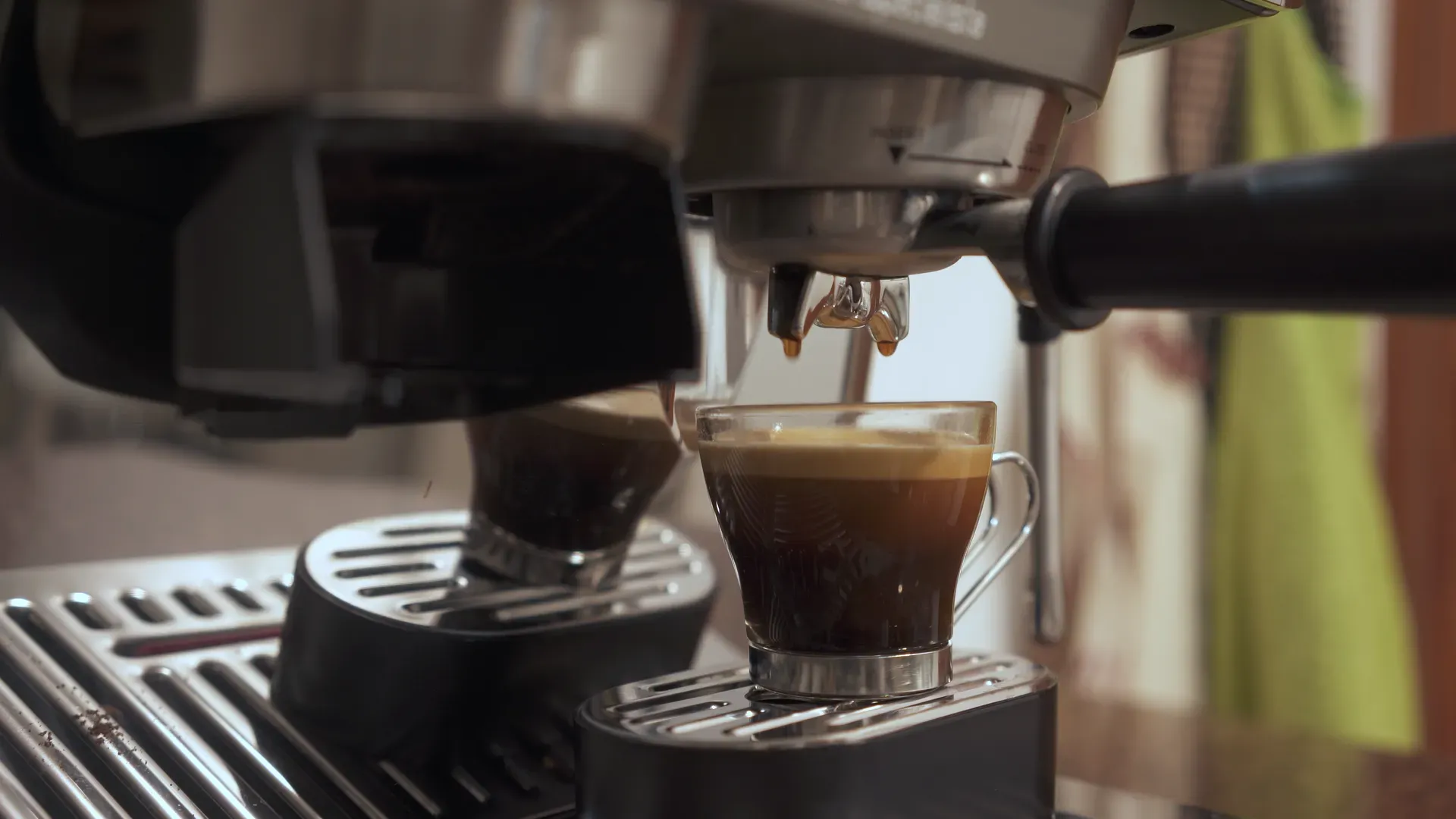
The De’Longhi Specialista Arte does not have this type of valve, so the portafilter continues to drip coffee for a few seconds once the extraction is finished. The puck is also wetter and muddier, and does not come out as easily from the portafilter. With a portafilter machine, it is always a good idea to purchase a knock box; however, with the Specialista Arte, it is especially advisable (De’Longhi sells one).
Thermal performance
Both machines use Thermoblock and have a PID that controls the temperature; however, the Barista Express has a slight advantage here because the group heats up quite a bit after just 15 minutes of operation, which favors the thermal stability of the coffee. The cup warmer tray also lives up to its name.
In the De’Longhi, the group does not heat up. The PID ensures extraction at the correct temperature; however, with the portafilter being cold, the coffee stays hot in the cup for a shorter period. It’s not a big difference, but it is noticeable. The cup warmer tray in the De’Longhi is also just for show.
Control panel
One of the advantages of the Specialista Arte is its control panel, more complete and intuitive than that of the Barista Express.
In addition to the programmed recipes for espresso and Americano coffee, the Specialista Arte Evo also includes cold brew. However, the best part is the temperature adjustment button, which offers three levels: 92ºC, 94ºC, and 96ºC. The Sage/Breville machine also has three very similar temperature settings (91 °C, 93 °C, and 95 °C), but they are selected through a button combination that is hard to remember. In this aspect, the De’Longhi machine is more practical and comfortable.
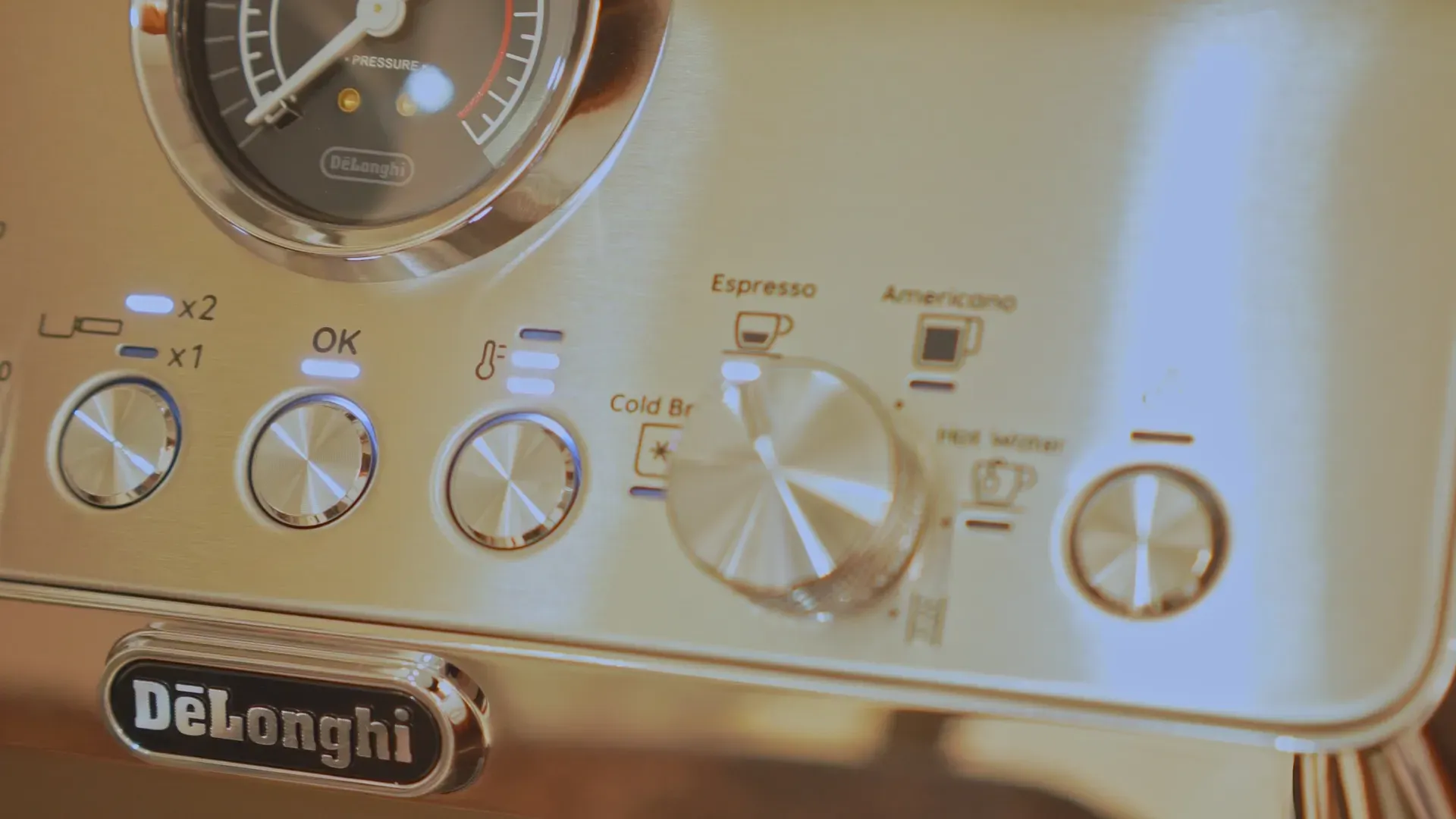
Included accessories
Regarding the included accessories, there are advantages to both machines. The Sage/Breville Barista Express features four filters: two single-wall and two double-wall, whereas the De’Longhi Specialista Arte comes with only two non-pressurized filters. As I mentioned earlier, Sage uses 54 mm filters, while De’Longhi uses 51 mm.
Although neither is designed for use with a pressurized filter, having one allows you to use pre-ground supermarket coffee or coffee beans that have been roasted for a while. The primary difference between a pressurized filter and a non-pressurized one is that the pressurized filter artificially creates additional pressure beyond that of the pump, which is useful when the coffee has lost freshness or does not have a fine enough grind to generate the necessary resistance for the pump to increase pressure.
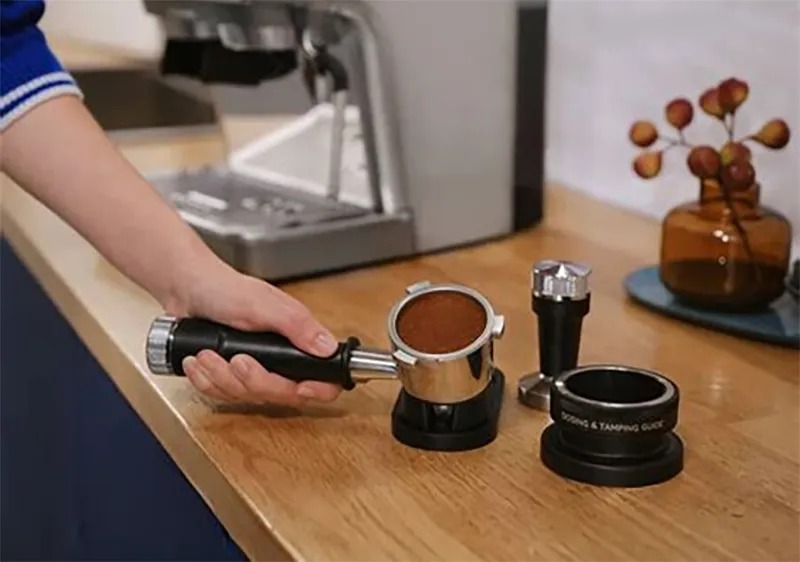
Something I really like about the Specialista Arte is its barista kit, which consists of a tamping mat, a dosing funnel, and a tamper. They are not the epitome of quality, but they are useful, quality accessories that are perfect in an entry-level barista machine.
The Barista Express only comes with a tamper, and it is of poorer quality. The funnel is also an indispensable accessory that should already be included with the machine. Sage/Breville sells a Dosing Funnel that I highly recommend buying.
Both machines come with a stainless steel jug for milk texturization, although here the Sage/Breville wins; it is larger and features an integrated thermometer that allows you to control the temperature the milk reaches comfortably.
Design
The Barista Express and the Specialista Arte are not significantly different in size, but they differ in design. In brief, I would say that the Barista Express is more solidly constructed, although it is more subdued in appearance, while the Specialista Arte is more visually appealing but less sturdy. This is mainly due to the greater use of plastic in the casing that De’Longhi uses, while Sage/Breville has incorporated more stainless steel into the design of the Barista Express.
In the design of both machines, there is a substantial difference in the drip tray, easier and more comfortable to clean in the Barista Express. In the De’Longhi Specialista, the plastic drip tray, located under the steel grid, is more difficult to wash by hand due to its numerous pieces and gaps.
Another difference between the two machines is that the Barista Express has the drawer to store filters and cleaning tools hidden behind the drip tray. The De’Longhi Specialista Arte has it at the top of the machine and easily accessible.
The Specialista Arte also comes with a small supplementary drip tray, designed to prevent splashing when using small cups. The Barista Express does not have this, but it doesn’t need it either, because the height between the portafilter outlet and the drip tray is smaller.
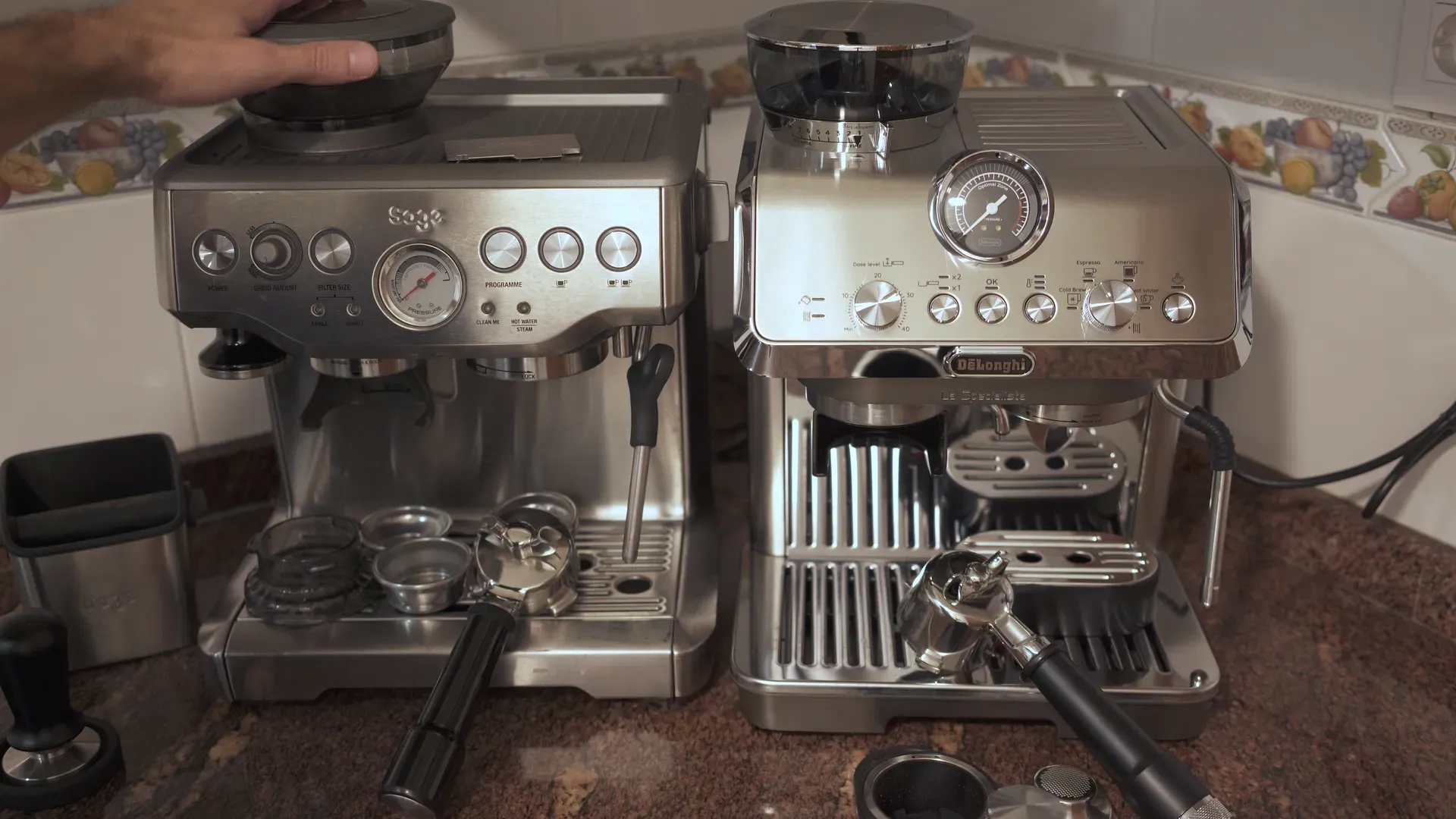
My verdict
Both machines are good and perfectly capable of making a great espresso. However, I believe that the De’Longhi Specialista Arte is a machine that beginners and newly initiated will get more out of from the start due to the facilities it provides, while the Sage/Breville Barista Express has more potential to make a better espresso but has a steeper learning curve.
In this comparison, the budget must be taken into account. The Specialista Arte is more affordable than the Barista Express in both the European and American markets, offering a price that makes it one of the best value-for-money coffee machines on the market. Therefore, the Specialista Arte is not only recommended for beginners but also for those with tight budgets.



